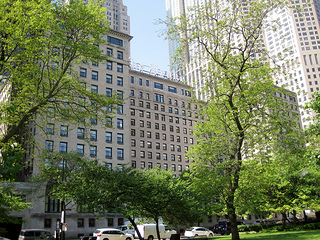
In an urban context, absent special environmental issues or legal constraints, land value and location value are pretty much the same thing. So we read in Crains that the Drake Hotel is on a 63,000 square foot parcel valued at $150 million, implying this land is worth about $2381/square foot. But no, the location probably isn’t worth that much. Rather, the land is leased by the owner of the structure, and the lease document says that, every five years, the land value is to be estimated and the annual rental set at 10% of the land value.
Possibly 10% was a reasonable return in the past, but in today’s zero-interest-rate world no safe investment would yield that much. Rather, the owner of the land actually owns two things: (1) the land, and (2) the privilege of requiring the building owner to pay an above-market rental rate. Were we to value the land “as vacant,” which is the correct way to estimate land value for taxation purposes, then (2) would disappear and the land would be worth, more or less, the same per square foot as other land in the very prestigious immediate neighborhood.
It would be interesting to see what the lease says specifically about how the land value is to be estimated, and to read the (certainly confidential) document describing how the $150 million value is justified.
For more discussion about methods of valuing land for assessment purposes, duck around for works by Ted Gwartney on the subject, or consult the old but still-relevant TRED volume.